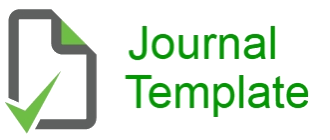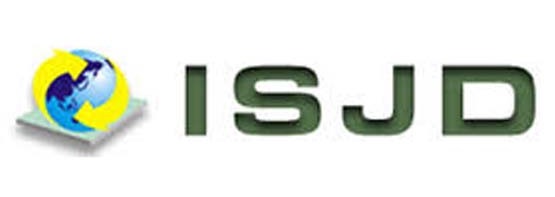PENGARUH BILIRUBIN TERHADAP T HELPER PADA NEONATUS DAPAT MENINGKATKAN TERJADINYA RESIKO ALERGI
Abstract
ABTRACT
The prevalence of allergic diseases globally increased in the last decade influenced by various factors.1 One of the factors associated is hyperbilirubinemia at neonatal period, which can later develop into an allergic disease.2 Bilirubin is a powerful antioxidant, which can be distributed into tissues. Bilirubin also has an immunomudulatory effect, it inhibit the response of Th1 cells and lowering interleukin-2 (IL-2) production. This decrease in IL-2 levels disrupted the balance of Th1-Th2 to Th2.3 At the time of the increase in bilirubin levels, there is an increase in the complement of prooxidant effects due to the breakdown of heme that can trigger the occurrence of inflammation of the respiratory tract in the future.4 In addition, in a study it was found that the effects of bilirubin that are not contracted can inhibit the growth of anaerobic bacteria in the gastrointestinal tract, thereby altering the composition of the intestinal microbiota and inhibiting the response of Th1 so that it can develop into an allergic disease.5 This rise a hypothesis that there is an influence of bilirubin on balance T helper that can increase the risk of occurrence of allergies in the future.
Keywords: Bilirubin, neonates, T helper, immune system, allergy
ABSTRAK
Prevalensi penyakit alergi secara global meningkat pada dekade akhir ini yang dipengaruhi oleh berbagai faktor.1 Salah satu faktor yang dihubungkan yaitu hiperbilirubinemia pada saat neonatus, yang kemudian hari dapat berkembang menjadi penyakit alergi. 2 Bilirubin merupakan antioksidan kuat, yang dapat didistribusikan kedalam jaringan. Bilirubin juga memiliki efek immunomudulator, yaitu dengan menghambat respon sel Th1 dan menurunkan produksi interleukin-2 (IL-2). Penurunan kadar IL-2 ini mengganggu keseimbangan Th1-Th2 menuju ke Th2.3 Pada saat terjadinya peningkatan kadar bilirubin, terjadi peningkatan komplemen efek prooksidan akibat pemecahan heme yang dapat memicu terjadinya inflamasi pada saluran pernafasan dikemudian hari.4 Selain itu, pada sebuah penelitian didapatkan bahwa efek bilirubin yang tidak terkonyugasi dapat menghambat pertumbuhan bakteri anaerob pada saluran cerna, sehingga mengubah komposisi mikrobiota usus dan menghambat respon Th1 sehingga dapat berkembang menjadi penyakit alergi .5 Hal ini memunculkan hipotesis bahwa terdapat pengaruh bilirubin terhadap keseimbangan T helper yang dapat meningkatkan terjadinya resiko terjadinya alergi dikemudian hari.
Kata kunci: Bilirubin, neonatus, T helper, sistem imun, alergi
Full Text:
PDFReferences
. Mallol J, Crane J, Mutius E V, Odhiambo J, Keil U, Stewart A, The ISAAC Phase Three Study Group. The International Study of Asthma and Allergies in Childhood (ISAAC) Phase Three : A Global Synthesis. Allergy Immunol (Madr). 2013. 41(2):73-85.
Gloria F, Bottini E. Is there a role of early neonatal events in susceptibility to allergy. Int J Biomed Sci 2010; 6: 8-12.
Ku MS, Sun HL, Sheu JN, Lee HS, Yang SF, Lue KH. Neonatal jaundice is a risk factor for childhood asthma: a retrospective cohort study. Pediatr Allergy Immunol 2012.23: 623-628.
Nag N, Halder S, Chaudhuri R, Adhikary S, Mazumder S. Role of bilirubin as antioxidant in neonatal jaundice and effect of ethanolic extract of sweet lime peel on experimentally induced jaundice in rat.Indian J Biochem Biophys 2009.46: 73-78.
Binder HJ, Filburn B, Floch M. Bile acid inhibition of intestinal anaerobic organisms. Am J Clin Nutr 2005.28: 119-125.
Gomella TL, Cunningham MD, Eyal FG. Hiperbili¬rubinemia. Dalam: Gomella TL, Cunningham MD, Eyal FG, Zenk KE, editor. Neonatology; Management procedures, On-call problems, diseases and drugs. New York: Lange Medical Book/McGraw-Hill Co; 2004.247-50.
Haga Y, Tempero MA, Kay D, Zetferman RK. Intracellular Accumulation of Unconjugated Bilirubin Inhibits Phytohemagglutinin Induced Proliferation and Interleukin-2 Production of Human Lymphocytes. Dig Dis Sci. 1996.41:1468–74.
Garcia, A. M., Fadel, S. A., Cao, S. & Sarzotti, M. T cell Immunity in neonates. Immunol. Res. 2000. 22, 177–190.
Siegrist, C. A. Vaccination in the neonatal period and early infancy. Int. Rev. Immunol. 2000.19, 195–219
Adkins, B. Development of neonatal TH1/TH2 function. Int. Rev. Immunol. 2000. 19, 157–171.
Shearer WT, Rosenblatt HM, Gelman RS et al. Lymphocyte subsets in healthy
children from birth through 18 years of age: The pediatric AIDS clinical trials group P1009 study. J Allergy Clin Immunol 2003; 112: 973-980.
Marchant A and Goldman M. T cell-mediated responses in human newborns: ready to learn? Clin Exp Immunol 2005; 141: 10-18.
Adkins B, Bu Y, and Guevara P. The generation of Th memory in neonates versus adults: Prolonged primary Th2 effector function in murine neonates. J Immunol.2001. 166: 918-925.
Kidd P, Th1/Th2 balance : The Hypothesis, its limitation, and implication for health and Diseases. Vol 8, Number 3. 2003. 223-46.
Trentini D, T helper Dominan: Autoimmune Patients, Have You Heard of Th1 and Th2 Dominance. 2015
Yamamoto Y, Negoro T, Wakagi A, Hoshi A, Banham AH, Roncador G, et al. Participation of th17 and treg cells in pediatric bronchial asthma. Journal of health sciences. 2010. 56: 589-97.
Mansjoer. Kapita Selekta Kedokteran jilid 2, Edisi 3. Jakarta:Media Aesculapius FK UI;2007:504-5.
Health Technology Assesment. Tata laksana ikterus neonatorum. HTA Indonesia[internet]. Jakarta:Unit pengkajian teknologi kesehatan direktorat jenderal pelayanan medik departemen kesehatan RI; 2004. Available from: URL: www.idai.or.id/saripediatri/fulltext.asp?q=521
American Academy of Pediatrics, Subcommittee on Hyerbilirubinemia. Management of hyperbilirubinemia in the newborn infant 35 or more weeks of Gestation. Pediatr. 2004. 114:297-306.
Sukadi, A. Hiperbilirubinemia.. Dalam: Kosim MS, Yunanto A, Dewi R, Sarosa GI, Usman A, penyunting. Buku ajar neonatologi. Jakarta: Badan Penerbit IDAI. 2008. 147-69
Cloherty JP, Martin CR. Neonatal hyperbilirubinemia.Dalam: Cloherty JP, Eichenwaald EC, Stark AR, penyunting. Manual of Neonatal Care. Edisi ke-5. Philadelphia: Lippincolt Williams & Wilkins. 2004. 185-221
Raimondi F. Bile acids modulate tight junction structure and barrier function of Caco-2 monolayers via EGFR activation. J Physiol Gastrointest. Liver Physiol. 2008. 294:906-13.
Chang CW et al. Neonatal Jaundice and Risk of Childhood Allergic Diseases : A Population Based Cohort Study. 2015.
Das RR, Naik SS. Neonatal hyperbilirubinemia and childhood allergic diseases: a systematic review. Pediatr Allergy Immunol. 2015. 26(1):2-11.
DOI: http://dx.doi.org/10.32883/hcj.v6i1.1081
Refbacks
- There are currently no refbacks.

This work is licensed under a Creative Commons Attribution 4.0 International License.
HUMAN CARE JOURNAL
Published by Universitas Fort De Kock, Bukittinggi, Indonesia
© Human Care Journal e-ISSN : 2528-665X P-ISSN : 2685-5798














